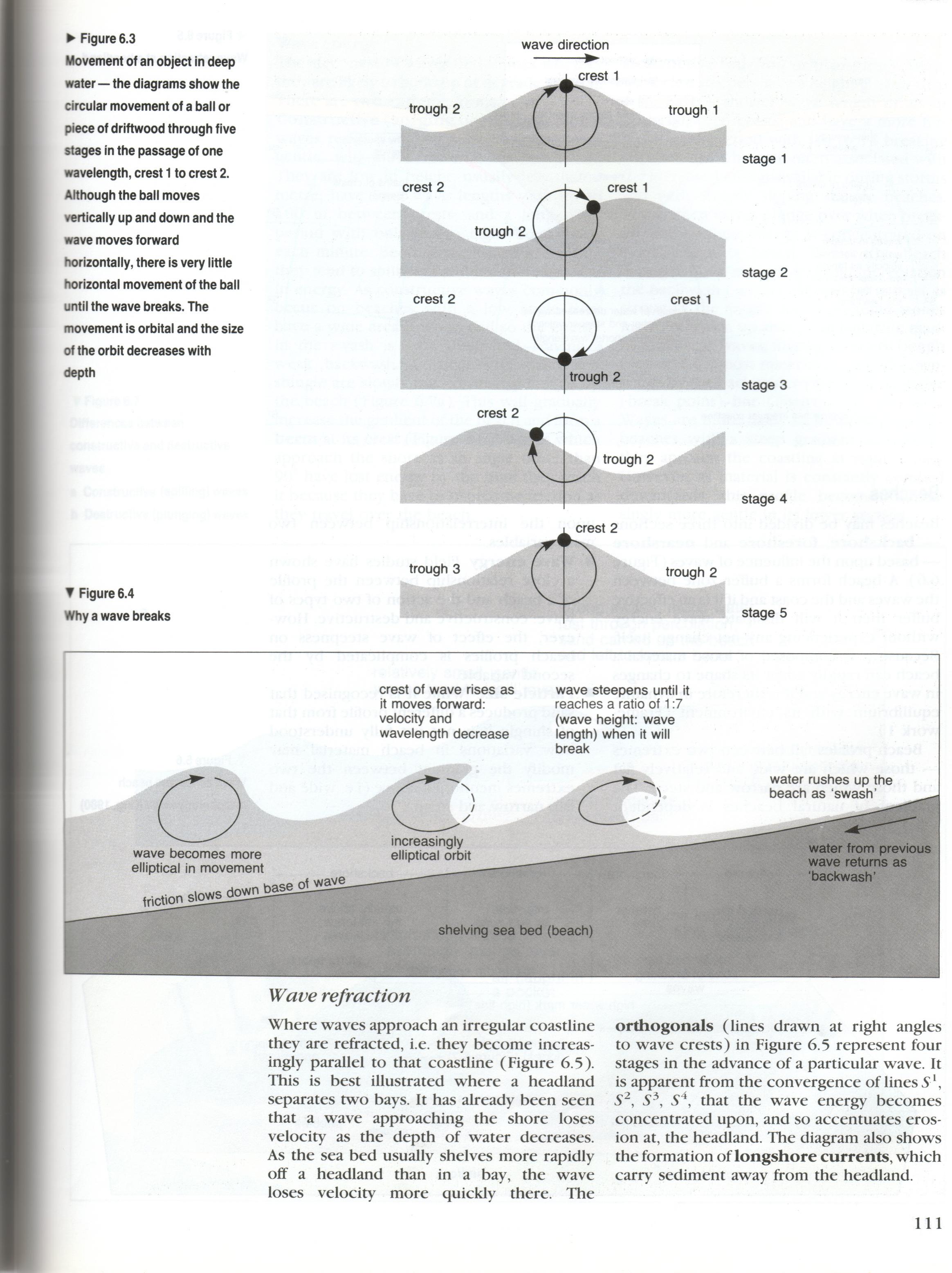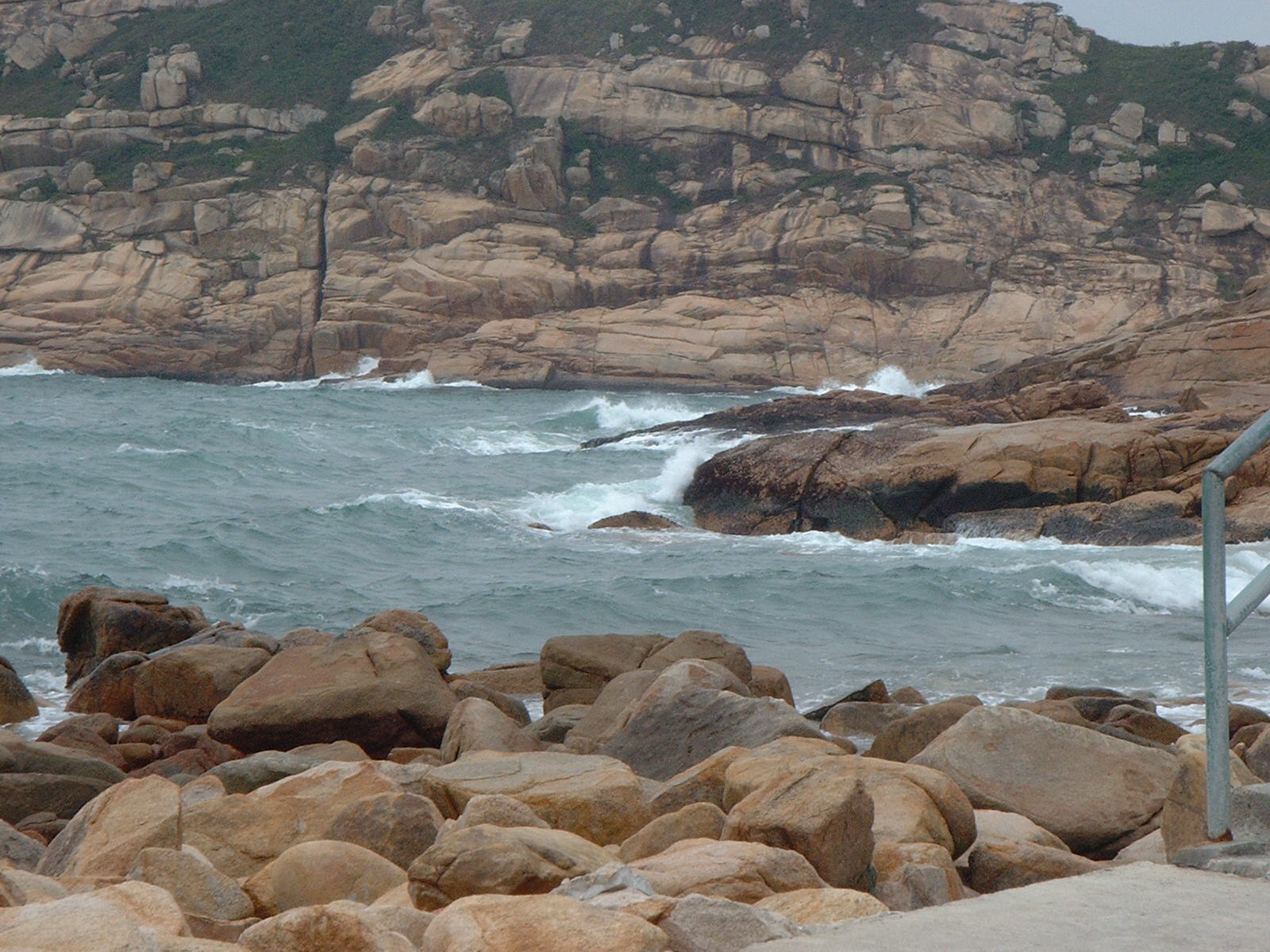
Waves
Waves
are created by the transfer of energy from the wind blowing over the surface of
the sea. However, tsunamis are the result from submarine shock waves generated
by the earthquake or volcanic activity. As the strength of the wind increase, so
too does frictional drag and size of the waves. The
energy required by the waves depends upon three factors:
 |
the
velocity
|
 |
the
period of time during which the wind has blown
|
 |
the
length of the fetch
|
Wave
Formation
When
wind turbulences blow across water, the produce
Types
of Waves
The
steepness of waves determines whet5her they are likely to build up or degrade a
beach. There are two extreme forms:
 |
Constructive
Waves
|
They
often have a short fetch. They approach the shore slowly. The swash is greater than the backwash. There is a gap of 7 to 10 seconds
between each wave crest breaking.
 |
Destructive Wave
|
They have a long fetch and are built up by strong winds. The backwash is greater than the swash. These waves break more frequently than constructive waves.
Wave
Refraction
Where
waves approach an irregular coastline they are refracted, i.e. they become
increasingly parallel to that coastline. This is best illustrated where a
headland separates two bays. It has already been seen that a wave approaching
the shore loses velocity as the depth of water decreases. As the sea bad usually
shelves more rapidly off a headland than in a bay, the wave loses velocity more
quickly there. The orthogonals represent four stages in the advance of a
particular wave. It is apparent from the convergence of lines S1, S2,
S3, S 4, That the wave energy becomes concentrated upon,
and so accentuates erosion at, the headland.

Wave
erosion
There
are four main processes by which the sea can erode the land. These are similar
to those of river.
 |
Hydraulic
Action
|
This
is the force or compression of air and water within
the
wave. This forces the
rocks apart along lines of
weakness.
Blocks or fragments of rook break away.
 |
Corrasion
|
This
is the wearing down of the rocks by the load. The load
is either moved along the
sea floor or carried in the waves.
 |
Attrition
|
This
is the wearing down of the load itself by friction as
the
waves move. Rounded
pebbles and sand are produced.
 |
Corrosion
|
This
is chemical erosion. It involves both the chemical
change and disintegration of
some minerals when they come into contact with sea water.
|